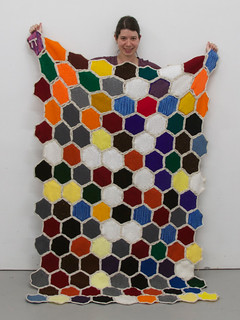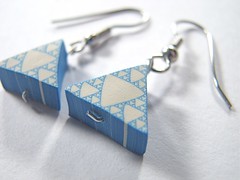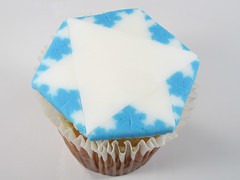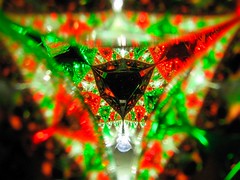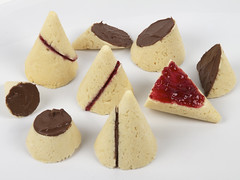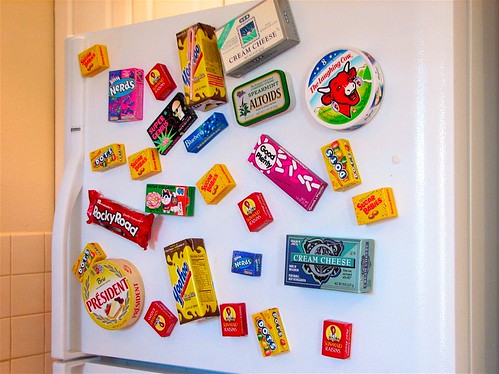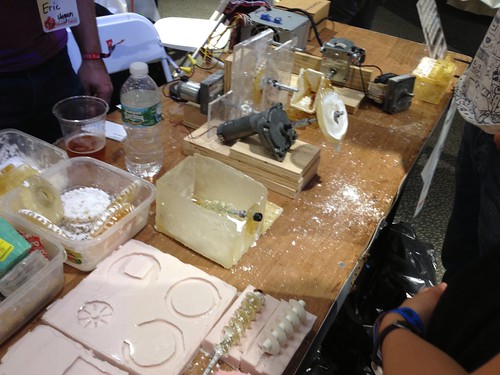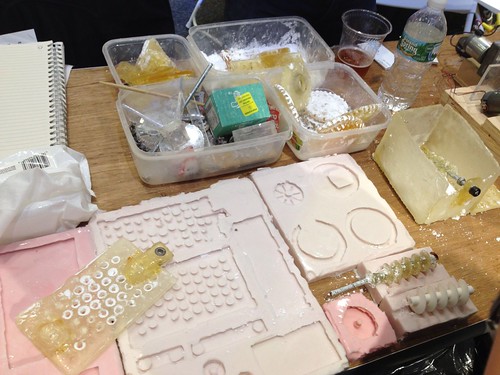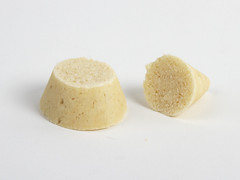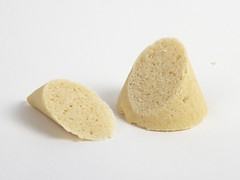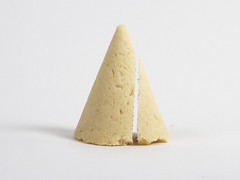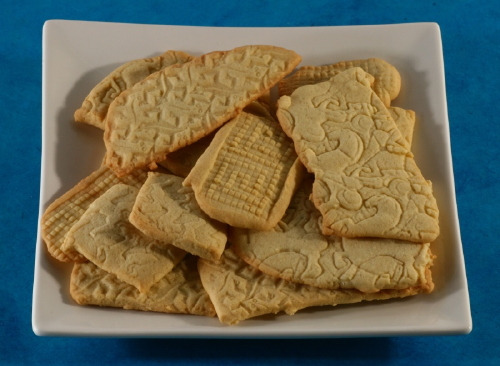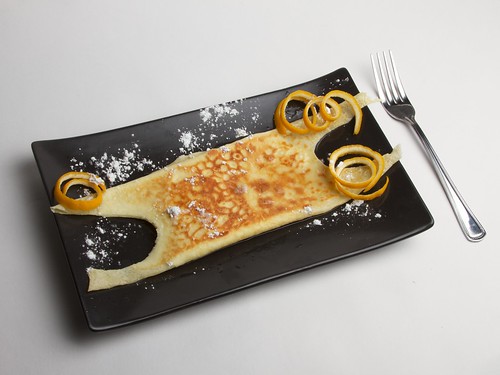
Here’s how to make a variant on our plum chutney, tailored for the creamy sweetness of peaches.
We’ve reduced the overall quantity of fruit and sugar to get a higher spice concentration. The cayenne and ginger are increased to make it even spicier. Pepper flakes are added both for flavor, and for pretty flecks of color against the pale peach pieces. We also added cloves for a little more depth of flavor.
The peaches are not peeled, both to get more peach flavor and for the color the skins add. Wash well or peel (blanching makes peeling easier) if the provenance of your peaches is unknown and you’re concerned about pesticides.
Ingredients:
- 6 cups cut up pieces of peaches, pits removed, skins (optionally) left on
- 2 lemons, cut into small pieces, seeds removed
- juice from 3 more lemons
- 2-3 Tbsp fresh ginger, peeled and grated (a microplane works great)
- 1 Tbsp cumin seeds
- 1 stick of cinnamon
- 1 tsp cayenne pepper
- 1/2 tsp red pepper flakes
- 1/2 tsp garam masala
- 10-12 whole cloves
- 1/2 cup water
- 3 cups sugar
Put everything except the sugar into a sauce pot and cook, stirring occasionally, until the fruit starts to soften, about 10-15 minutes.
Add sugar and cook, stirring frequently, until it thickens to a consistency you like (20 minutes to an hour). Remove cinnamon stick after cooking.
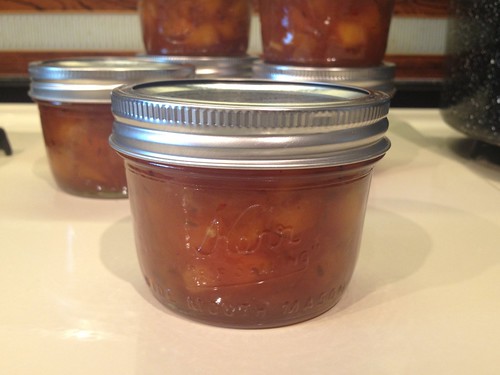
You can also follow your favorite canning procedure for longer term storage. Makes about 3 pints.






